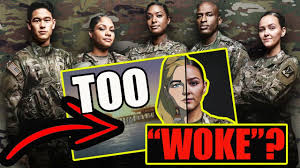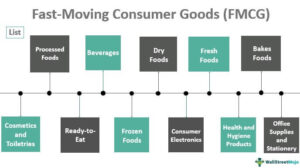How Woke advertising fmcg products become lazy sales gimmick to retailers?
Woke marketing
Big corporations on the look out for ways to develop attachment with their target audience, saw an opportunity beyond adopting human traits (humility, passion, sophistication) to adopt human behaviours (activism).

Riding on consumer tensions, corporations became activists, fighting for injustice. Nike’s social injustice campaign (featuring Colin Kaepernick), Pepsi’s short-lived advertisement featuring Kendall Jenner, and Gillette’s take on toxic masculinity, were among the most talked about examples.

But brands without a clear moral purpose were perceived by an increasingly cynical public as inauthentic: lecturing in morality but not practising what they preached. This spawned the meme “get woke, go broke”. On the one hand, corporations triggered public debate on key issues, on the other hand, they damaged the woke concept.
Late last year, Andrew Sullivan wrote about woke social awareness as an equal but opposing position to Evangelical Christianity:
And so the young adherents of the Great Awokening exhibit the zeal of the Great Awakening […] they punish heresy by banishing sinners from society or coercing them to public demonstrations of shame […] We have the cult of social justice on the left, a religion whose followers show the same zeal as any born-again Evangelical.
What Does it Mean to be “Woke”?
Simply put, being “woke” is a byword for being updated on social issues and current affairs. It reminds the viewer to keep in touch with reality and the problems going on in the world, and in turn, they respect brands who have the same perspective.
Woke content has made its way to mobile advertising trends, as more businesses are starting to see the value in investing in well-thought out and socially relevant ads versus traditional, hard sell techniques.
Axe – Is it ok for guys…
There’s also an equally empowering ad geared towards challenging toxic masculinity. It features real search queries that men make online about how they should act. It balances the other side of the equation and pokes at the existing problem that guys encounter as well, giving viewers a holistic perspective on a modern social issue.
Going forward, brands will likely balance activism with safer and perhaps less polarising consumer engagement. Gillette’s latest campaign shifts the brand’s focus from big issues to more traditional local heroes.
Fearful of global public backlash, corporations will first test their woke concepts and brand purpose ideas in more localised markets. Coca Cola’s recent pro-LGBT ad campaign in Hungary, or Cadbury’s “united in one bar” campaign in India are examples of this approach.

First used in the 1940s, the term “woke” has resurfaced in recent years as a concept that symbolises awareness of social issues and movement against injustice, inequality, and prejudice.
But popularity has diluted its meaning and the idea has been cynically applied to everything from soft drink to razors, attracting criticism if too liberally applied.
One recent stretch for this term is the New Yorker magazine’s headline for a story about a vegan chef’s output, which read: What’s in a Woke McRib?
Being woke was originally associated with black Americans fighting racism, but has been appropriated by other activist groups – taking it from awareness and blackness to a colourless and timeless phenomenon.

Read more: Woke washing: what happens when marketing communications don’t match corporate practice
Now, there are dangers associated with appearing overly concerned with consciousness-raising – see Canadian prime minister Justin Trudeau being described as seeming “like a social-justice Twitter account on two legs” .
Examples of Social Ads That are Just Plain “Woke”
If you look at the most talked about adverts in the world, you’ll notice that all of them run through a common thread: they can tug at your emotions. Brands who have successfully been able to wield the power of emotional marketing will tell you that incorporating emotions in your strategies work.
Emotions play an integral component in driving user engagement. It’s in people’s nature to feel and react to everything they see. As a marketer, you should always want to elicit a positive response from your viewer, whether it’s confidence, laughter, and more. Figuring this out is half the battle when it comes to creating your ad.
The other half is messaging. Nowadays, modern brands are producing content tailored to millennials that promote social awareness related to environmental, sociocultural, or political issues. Millennials spend a lot of time soaking up information on social media and are generally more in touch with global issues than previous generations, making them particularly receptive to “woke” content.

Woke history
Black Americans in their ongoing fight against racism and social injustice have used the term “woke” at key moments of history.
In literal terms, being woke refers to being awake and not asleep. One Urban Dictionary contributor defines woke as “being aware of the truth behind things ‘the man’ doesn’t want you to know”. Meanwhile, a concurrent definition signals a shift in meaning to “the act of being very pretentious about how much you care about a social issue”.
The Oxford dictionary expanded its definition of the word “woke” in 2017 to add it as an adjective meaning “alert to injustice in society, especially racism”.
In the 1942 first volume of Negro Digest, J. Saunders Redding used the term in an article about labor unions. Twenty years later, a 1962 New York Times article was titled: If You’re Woke You Dig It: No mickey mouse can be expected to follow today’s Negro idiom without a hip assist.
On June 14, 1965, Martin Luther King Jr, gave a commencement address called Remaining Awake Through a Great Revolution at Oberlin College:
There is nothing more tragic than to sleep through a revolution […] The wind of change is blowing, and we see in our day and our age a significant development […] The great challenge facing every individual graduating today is to remain awake through this social revolution.
Maltesers – New Boyfriend
Maltesers gave representation to people with disabilities in their New Boyfriend ad, which aims to remove the stigma that surrounds them. The 30-seconder was reportedly so successful that their sales grew by 8.1% and brand affinity grew by 20%–effectively doubling their expectations.
Pot Noodle – You Can Make It
For comedic relief and breaking of gender stereotypes, we have Pot Noodle’s campaign that ended with a plot twist. Many people were pleased with the delivery of the advert and praised the brand for joining the army of companies that are encouraging gender fluidity. It managed to be funny instead of poking fun at the issue, which is a fine line many find difficult to distinguish.
Here are some examples of ads that are just plain woke:

Authenticity is Key
Social ads work—but there’s a fine line you need to be mindful of. While the above brands succeeded with their campaigns, it’s important to note that some have failed as well. If you try too hard to fit your brand into a different mold or create content just because it’s trending, your audience will be quick to see through it.
The real key to success is staying authentic to your brand’s messaging and factoring in the emotions that you want your audience to feel. If executed brilliantly, there’s no doubt that your brand’s recognition, engagement, and sales will increase—all the while sending out a message that will benefit society as a whole.
Seen any other great examples of “woke” advertising lately? Let us know all about it in the comments

Eleven Thailand – Boss Da Market
Thai commercials are some of the most creative ones out there. The advert centers on fake news and is especially relevant in our socially connected world: You can’t trust everything you watch or read online. It shows a boss getting angry at her market tenants, with a bystander filming her as she does so. The video goes viral, but it only shows one side of the story.
Waking up to Woke Advertising
For poor grammar alone the term sparked our interest, but we thought we’d take a look at what in particular it refers to and whether it is indeed a new approach or simply a re-invention of something we’ve seen before.

So, let’s begin with a definition (usually a very good place to start). The most common interpretation is that Woke refers to advertising which is socially aware and shows an understanding of what is going on in the wider community. The actual single word ‘woke’ is one which has come into more common use since the Black Life Matters movement gained momentum in the U.S. (from around 2013) when social media followers were encouraged to #StayWoke by which they meant stay aware of the narrative when it came to matters of systematic racism, police brutality and general social injustice. A serious and weighty subject which merits a blog post (or many) in its own right, but for our purpose here we’re interested in the legacy it has introduced and what we are seeing today.

So, is Woke Advertising a genuinely new idea or simply a re-run of the kind of savvy strategies brands have used in the past to gain our approval and support? Well, there are a number of periods in history where advertising, particularly in the US, has tried to follow the socially-conscious route. As far back as the 1920’s, and then more noticeably in the 1940’s, American ads frequently made reference to the company in question’s support of the war effort; nationalism was strong and so was the desire to ‘piggy-back’ on the loyalty it instilled in the population. In the 70’s we had the infamous Coke advert (here’s the point at which we all start humming ‘I’d like to buy the world a Coke’ and become instantly annoyed by the presence of the song in our minds…).

So, what are we likely to see form this point onwards? Well, we think that Woke Advertising is by no means a ‘flash in the pan’. With our cynical heads on, we don’t necessarily believe that brands have awoken to the plight of the planet or the people and creatures who live on it, we simply believe that they are now 100% bought into the idea that they must show that they care.
Heineken – Worlds Apart
Heineken was able to incorporate a lot of messages in their beautifully executed social experiment. They managed to find ways to incorporate environmental issues, gender diversity, and feminism. The 4-minute ad took three pairs of people with opposing views on specific issues and had them interact for the first part of the experiment. After the reveal, they were given a chance to stay and discuss their differences over a beer or leave. All of them remained—and the heartwarming exchanges remind people that it’s possible to open your mind to other things if we aren’t so quick to judge.
Is Woke Washing An Issue If It Helps Raise Awareness?
Brands often use marketing to make a stance on a certain topic apparent. But the same brands also partake in activities that are contrary to their message. For example, Nike made an advertisement aimed towards gender equality while also refusing to give maternity leave.

Nike had made Serena Williams the front of their campaign that aimed to challenge the attitude towards women in sports. Then Alysia Montaño, the runner sponsored by Nike revealed that the company did not provide her with paid maternity leave.
Using marketing to take a stance on an issue, but simultaneously contributing to the issue is woke washing. Unilever CEO Alan Jope stated that woke washing is “polluting purpose”, as it takes advantages of issues but does not take actual steps towards betterment.
Always – #LikeAGirl
This ad is probably one of the most popular ones out there. Though released five years ago, the Always campaign has received global recognition that’s unheard of in the advertising industry: an Emmy, a Cannes Grand Prix award, and the Grand Clio Award. The strikingly simple ad interviews people about how to do things “like a girl,” and their raw answers were real, authentic, and relatable.

Woke washing
Woke washing is when a brand or company uses marketing to take a stance regarding social issues to make a profit. Brands use progressive values in their advertising to get points for being “woke” and build a loyal base of customers.
A study revealed that 81 per cent of millennials expect brands to make a public commitment to their social causes. In 2016, Colin Kaepernick knelt during the American national anthem at the NFL games to protest police brutality and racism. After Nike made Kaepernick the face of their advertisement campaign, the company earned $6 billion. By making their stance regarding peaceful protests and racism clear, they made a large profit.

While raising awareness is an imperative step towards making change, more needs to be done.
What Impactful Change Can Companies Make?
Instead of just making advertisements, the first thing companies should do is address the issues within their company itself. A company can’t preach about equality while enabling a workplace that is sexist, racist, homophobic, or transphobic, etc.
Woke Terms You Should Know

Several techniques are used by brands to appear more ethical and progressive via marketing. Here are some terms related to such techniques.
Woke Brand Activism
Brand activism is a company’s effort to promote or direct economic, social, or political reform. Brand activism aims to play a role in social change and serve the communities. The ‘Buy a Lady a Drink’ campaign is an example of effective brand activism. In the campaign, for every limited edition bottle purchased, a months’ worth of clean water was provided for families in developing countries.
Airbnb – We Accept
Airbnb’s heartwarming ad in response to the political decision regarding the American borders in 2017 got a positive reception from viewers all over the globe. It was a simple montage that showed different cultures, ethnicities, and acceptance no matter what background you come from.
Pinkwashing
Pinkwashing is the act of using LGBTQ+ issues to get points for being “woke”. The Bank of America sponsored floats at pride parades and is considered to be queer-inclusive. At the same time, it has been sued for anti-LGBTQ discrimination by customers and employees.
While targeting queer people for particular products is not inherently wrong, taking that money and giving it to politicians that are openly anti-LGBTQ+ is an issue.
Brand activism turns into woke washing when campaigns use issues for a profit without making real change.
Greenwashing
Greenwashing refers to using marketing to spread information that misleads people into believing a company is making an effort to safeguard the environment. The company will claim that its products are environmentally friendly. Companies that greenwash tend to exaggerate their claims of being environmentally friendly.
Top most festival Products FMCG consumers search today
World Wide Festive Trends Decoded What Indian festive consumers seek...
Read MoreHow right selection of FMCG Salesmen improves brand market share
How can FMCG Companies improve salesman’s technique in order to...
Read MoreHow most searched Fmcg sales and marketing words help newbie salesman
Why undestand FMCG sales management? Sales management is the process...
Read MoreHow Successful FMCG Salesman Starts his Day, a guide
How does one become a good sales executive in the...
Read More






Pingback: Movie Experience + Movie Star Perception = Brand Birth
Pingback: FMCG ATL + BTL Testing, Advertising, Marketing =Top Brands
Pingback: Human Greed for Power, Survival Leaves 78% Plastic Garbage
I just finished reading your blog and I have to comment, it was an absolute pleasure. Your writing style is engaging and illustrative, making me feel like I was right there with you on your adventures. The picture you included were also stunning and really added to the overall quest. good-luck